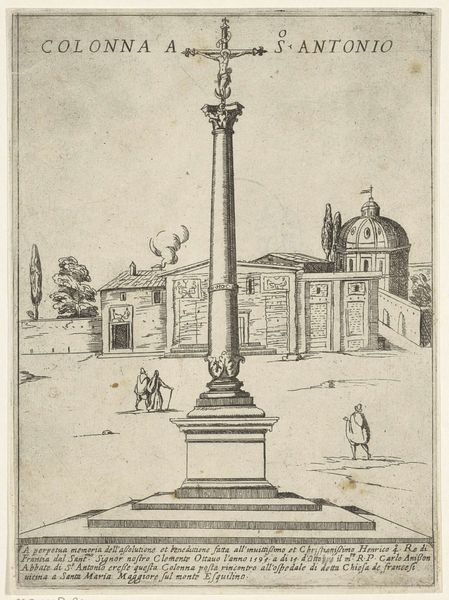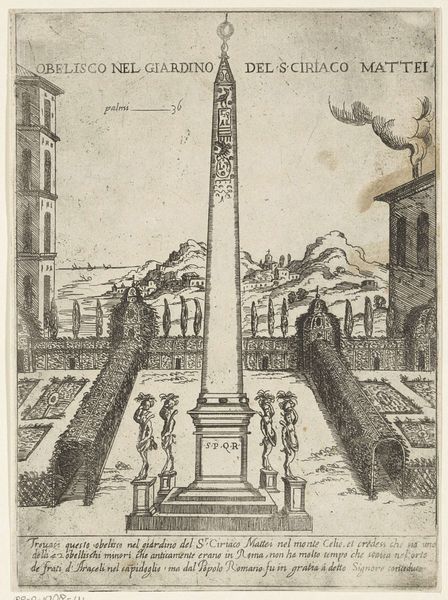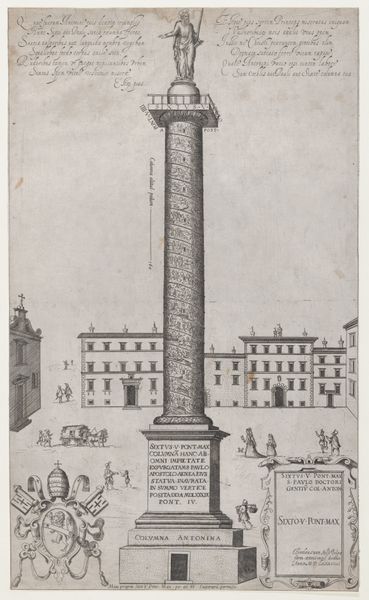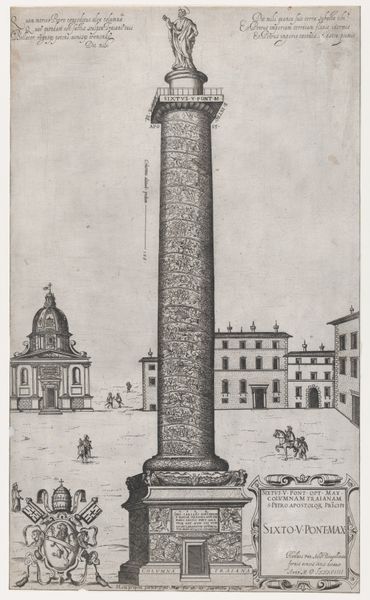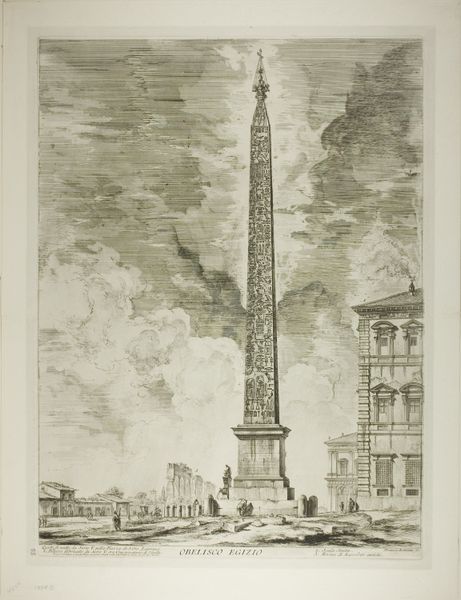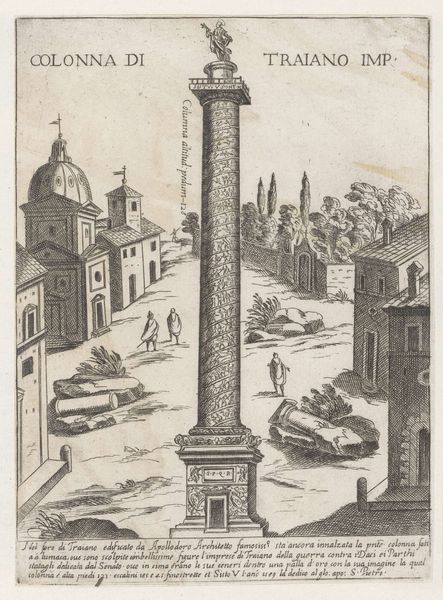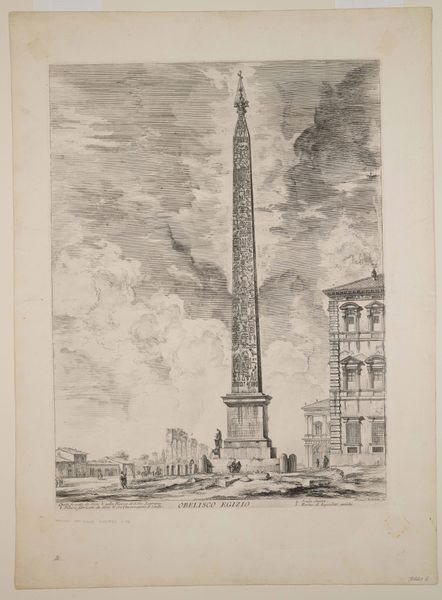
print, engraving
# print
#
landscape
#
line
#
cityscape
#
italian-renaissance
#
engraving
Dimensions: height 215 mm, width 155 mm
Copyright: Rijks Museum: Open Domain
Curator: This is Giovanni Maggi’s "Vaticaanse Obelisk," a print made sometime between 1576 and 1618. What strikes you first about it? Editor: Well, it’s remarkably precise, almost like an architectural blueprint. There's this imposing obelisk piercing the Roman skyline, St. Peter's Basilica looming grandly behind it. But at the same time, it feels slightly… clinical. Not exactly inviting, is it? Curator: I see what you mean. It’s certainly more documentary than dreamy. Maggi’s aim was to showcase the obelisk, how it dominates the piazza. This wasn't just about aesthetics; it was a symbol of papal power, visually reinforcing the authority of the church over Rome. The obelisk itself had been moved to this spot in 1586, a major engineering feat. This print immortalizes that event, and the subsequent imposing power that that signified. Editor: That makes sense. The clean lines, the deliberate placement of figures, it's all staged to emphasize control and order. It's fascinating how the very act of depicting a monument can become a form of asserting control over its narrative. What do you think the little anecdotes add? Curator: I suspect the human presence adds some scale for its audience, emphasizing just how magnificent this artifact is. These individuals feel frozen and captured in this moment in time, forever dwarfed by the architecture that envelops them. Also, with these subjects placed to the side, and scattered around, one is further encouraged to make their way to the focal point. Editor: I find it fascinating to consider its place in Renaissance print culture. Before photography, these engravings served as visual records, as a way for people to experience places they might never visit. The degree of detail here must have been captivating for its contemporary audience. Curator: Absolutely, imagine encountering Rome through this meticulous rendering. Prints like this fueled the imagination and shaped perceptions of urban spaces and ancient monuments. Editor: So, less an emotional landscape, more a carefully constructed statement of dominance and historical record, really intriguing! Curator: Indeed, it offers a fascinating snapshot of Rome, caught between its ancient past and its Renaissance present.
Comments
No comments
Be the first to comment and join the conversation on the ultimate creative platform.

